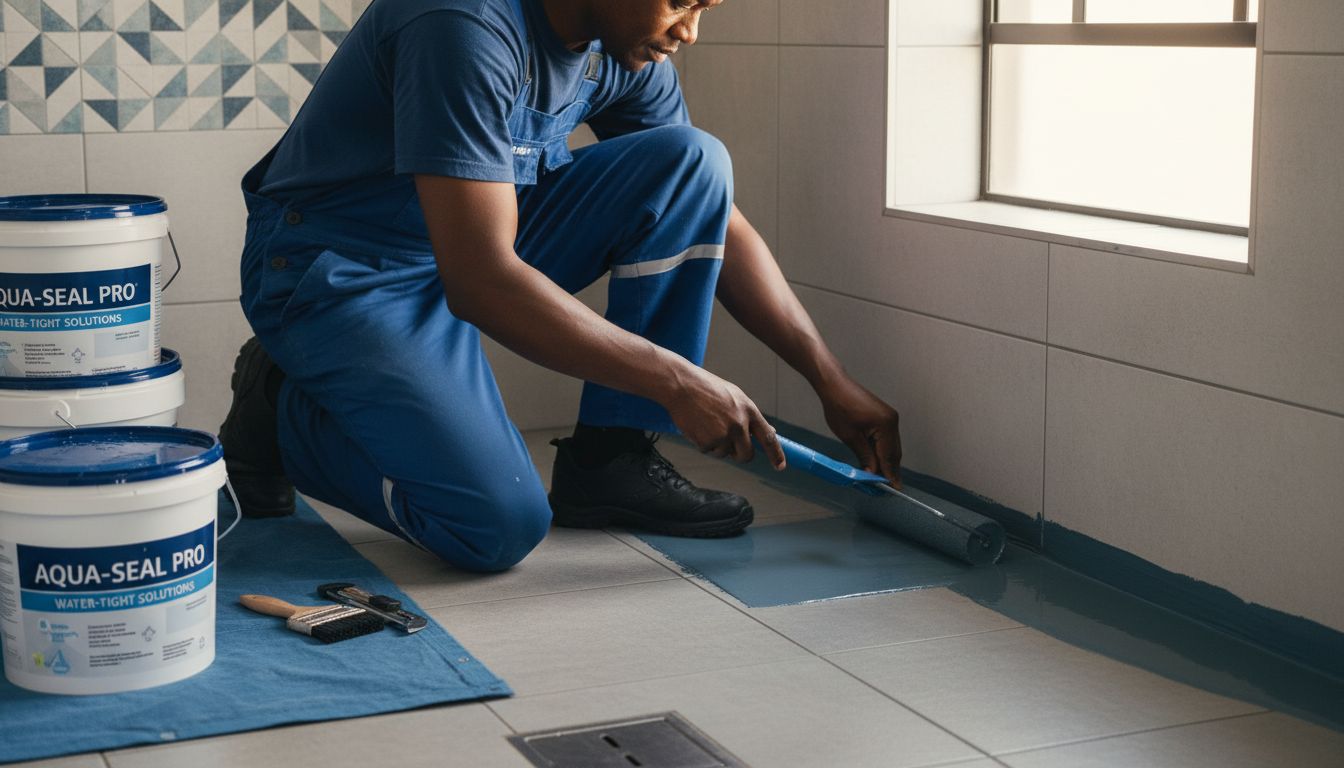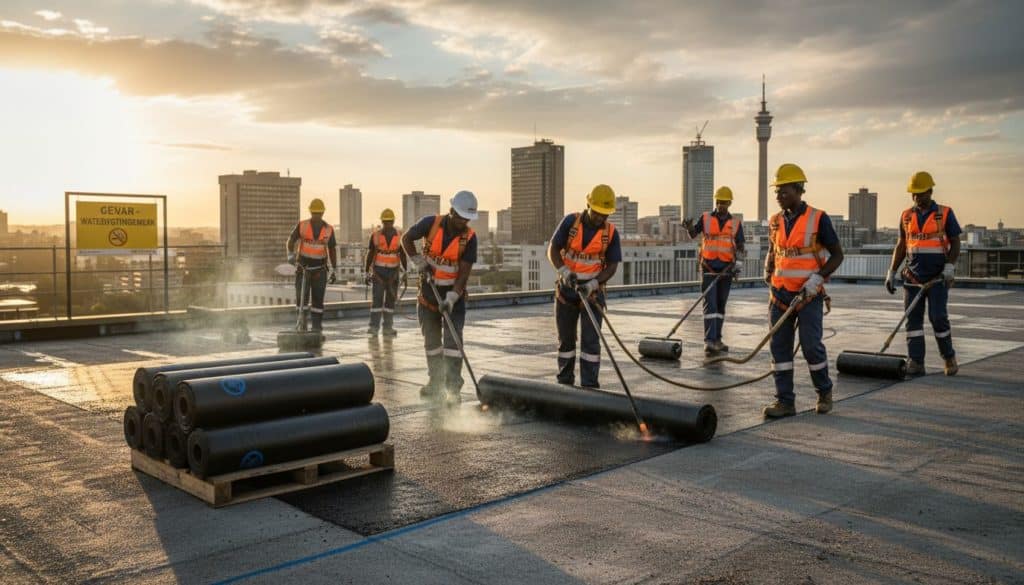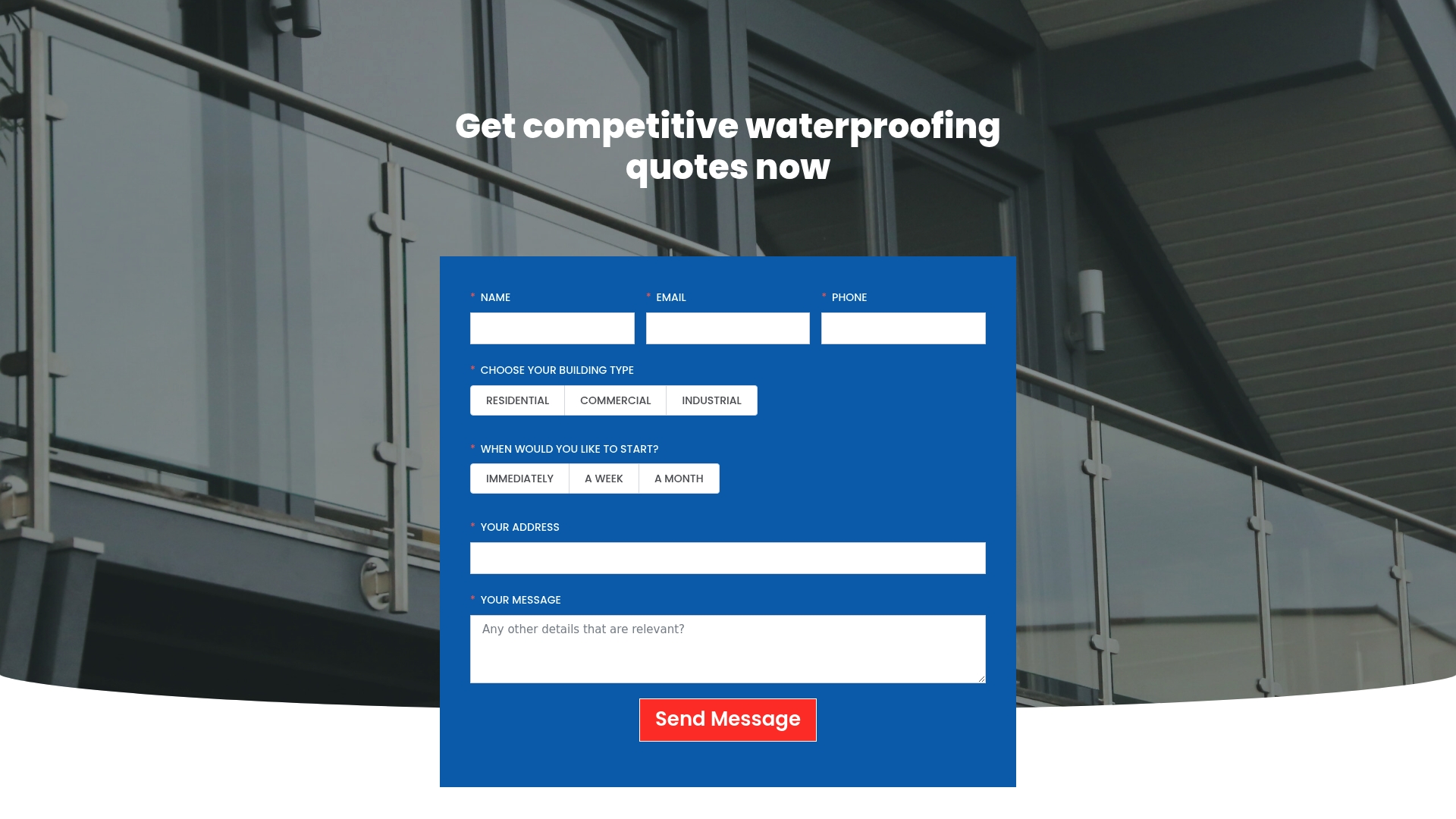Water damage costs homeowners and businesses billions every year, yet many structures remain unprotected against leaks and moisture. Even a small water intrusion can trigger mould growth or foundation cracking. Membrane waterproofing systems stand out as a proven defense, offering specialized solutions that keep buildings dry and durable for years. Choosing the right membrane protects investments and prevents common problems that threaten structural integrity.
Table of Contents
- Defining Membrane Waterproofing Systems
- Types of Membrane Waterproofing Explained
- How Membrane Waterproofing Works
- Applications for Residential and Commercial Properties
- Installation Process and Cost Factors
- Common Risks and What to Avoid
Key Takeaways
| Point | Details |
|---|---|
| Diverse Membrane Types | Membrane waterproofing systems include liquid-applied, bituminous, and cementitious coatings, each suited for different structural applications. |
| Critical Application Areas | These systems protect residential and commercial properties from moisture damage in areas like bathrooms, basements, and flat roofs. |
| Installation Nuances | Effective installation involves thorough surface preparation, precise membrane application, and adherence to quality assurance practices. |
| Risk Mitigation | Understanding application and material selection risks is essential for ensuring the effectiveness of waterproofing systems. |
Defining Membrane Waterproofing Systems
Membrane waterproofing systems represent a critical engineering solution designed to protect structures from water infiltration and moisture damage. According to sephakucement, these systems are sophisticated barriers engineered to prevent water penetration into building structures, offering comprehensive protection across various architectural environments.
These systems come in multiple formats, each tailored to specific structural requirements. Key types include:
- Liquid-applied membranes: Seamless coatings that create a continuous protective layer
- Bituminous coatings: Petroleum-based waterproofing solutions ideal for underground structures
- Cementitious coatings: Rigid waterproofing systems perfect for concrete and masonry applications
The primary objective of membrane waterproofing is creating an impermeable shield that blocks moisture transmission through surfaces. By applying these specialized protective layers, property owners can safeguard their investments against potential water-related structural deterioration, preventing issues like mould growth, concrete degradation, and foundational weakening.

Types of Membrane Waterproofing Explained
Membrane waterproofing encompasses several sophisticated systems designed to protect structures from moisture intrusion. According to sephakucement, these systems can be categorised into five primary types, each serving unique architectural and environmental requirements.
The main types of membrane waterproofing include:
Here’s a comparison of key membrane waterproofing types and their applications:
| Membrane Type | Typical Applications | Key Advantages |
|---|---|---|
| Cementitious Coatings | Water treatment plants Basements |
High-pressure resilience Rigid |
| Liquid-Applied Membranes | Balconies Complex surfaces |
Seamless Flexible Easy to apply |
| Bituminous Coatings | Foundations Underground areas |
Durable Cost-effective |
| Bituminous Membranes | Low-sloped roofs Terraces |
Robust Weather-resistant |
| Polyurethane Liquid Membranes | Exposed flat roofs Industrial units |
UV resistant Highly elastic |
- Cementitious Coatings: Ideal for high-pressure environments like water treatment plants, these rigid systems provide exceptional structural protection.
- Liquid-Applied Membranes: Offering remarkable flexibility and seamless application, these membranes create continuous protective barriers.
- Bituminous Coatings: Renowned for durability and cost-effectiveness, these petroleum-based solutions excel in underground and foundation applications.
- Bituminous Membranes: Specifically designed for low-sloped roofing, these membranes deliver robust weatherproofing.
- Polyurethane Liquid Membranes: Perfectly suited for flat roofs exposed to harsh environmental conditions.
As procompare highlights, these membrane systems can be spray or hand-applied, creating flexible barriers that protect against moisture infiltration. For comprehensive insights into selecting the right membrane system, check out our 7 Essential Types of Waterproofing Membranes Explained guide, which provides detailed technical guidance for property owners and construction professionals.
How Membrane Waterproofing Works
Membrane waterproofing is a sophisticated engineering approach designed to create an impenetrable barrier against moisture infiltration. According to sephakucement, these systems function by establishing a protective layer that comprehensively blocks water penetration through various application techniques.
The core mechanism of membrane waterproofing involves two primary methods:
- Coating Application: Liquid membranes are applied directly to surfaces, curing to form a seamless, continuous waterproof barrier
- Sheet Installation: Pre-formed membrane sheets are carefully adhered to structures, creating a robust protective shield
Each method targets specific structural vulnerabilities, ensuring that underlying building materials remain completely dry and protected. The application process depends on the specific membrane type and the surface requirements. Liquid membranes can be spray or hand-applied, creating flexible barriers that conform to complex architectural surfaces, while sheet membranes provide rigid, precise protection for more standardized areas. Waterproofing Membrane: What Is It and When to Use It? offers deeper insights into selecting the most appropriate waterproofing approach for different structural contexts.
Applications for Residential and Commercial Properties
Membrane waterproofing systems play a critical role in protecting both residential and commercial structures from water-related damage. According to sicongroup, these versatile solutions are strategically employed across multiple architectural environments to ensure structural longevity and integrity.
Key application areas include:
-
Residential Spaces
- Bathrooms and wet areas
- Kitchen surfaces
- Basement foundations
- Balconies and external terraces
- Underground living spaces
-
Commercial Environments
- Flat roofs
- Parking deck surfaces
- Underground parking facilities
- Industrial floor systems
- Mechanical equipment rooms
The primary objective of membrane waterproofing in these diverse settings is preventing moisture penetration that could compromise structural stability. By creating an impermeable barrier, these systems protect against potential water damage, mould growth, concrete deterioration, and other moisture-related structural challenges. Understanding the Waterproofing Application Process provides additional insights into implementing these critical protective strategies across different property types.
Installation Process and Cost Factors
Membrane waterproofing installation is a nuanced process requiring precision and expertise. According to waterproofingspecialists-gauteng, installation techniques vary significantly depending on the membrane type, with costs ranging from R150 to R500 per square meter in major urban areas like Johannesburg and Pretoria.
The installation process typically involves three critical stages:
-
Surface Preparation
- Cleaning and removing existing debris
- Repairing surface imperfections
- Ensuring proper substrate condition
-
Membrane Application
- Liquid membranes: Sprayed or rolled onto surfaces
- Torch-on membranes: Heat-fused for seamless integration
- Sheet membranes: Precisely adhered to structural surfaces
-
Quality Assurance
- Checking membrane thickness
- Verifying complete surface coverage
- Ensuring proper curing and bonding
As procompare highlights, installation costs are influenced by multiple factors including material quality, area complexity, and required labour expertise. Waterproofing Systems Explained: Types, Methods, Use Cases provides additional context for property owners navigating these critical waterproofing decisions.
Common Risks and What to Avoid
Membrane waterproofing, while essential for protecting structures, involves several critical risks that can compromise its effectiveness. According to sephakucement, these risks primarily stem from improper application techniques and material selection that can undermine the entire waterproofing strategy.
Key risks and prevention strategies include:
Application Risks
- Inadequate Surface Preparation
- Skipping thorough cleaning and repair
- Ignoring substrate imperfections
- Applying membrane on unstable surfaces
Material Selection Risks
- Environmental Mismatch
- Using inappropriate membrane types
- Neglecting specific environmental conditions
- Failing to consider temperature and UV exposure
Technical Execution Risks
- Poor Workmanship
- Uneven membrane application
- Insufficient layer thickness
- Ignoring manufacturer installation guidelines
As procompare highlights, mitigating these risks requires employing skilled professionals who understand the nuanced requirements of different membrane systems. Waterproofing Membrane: What Is It and When to Use It? offers additional guidance for navigating these critical waterproofing challenges.
Protect Your Property with Expert Membrane Waterproofing Solutions
Membrane waterproofing is essential to prevent costly water damage and structural problems like mould, concrete decay, and foundation weakening. If you want to safeguard your residential or commercial property from moisture intrusion with reliable, seamless barriers such as liquid-applied membranes or bituminous coatings, understanding your options is just the first step. At Pro Waterproofing, we specialise in helping South African property owners turn waterproofing knowledge into effective protection.
Explore our informative resources in the Uncategorized – Pro Waterproofing section to learn how precise application, quality materials, and professional expertise are critical to success.
Don’t wait for signs of water damage to appear. Act now to secure your investment by connecting with trusted waterproofing specialists through Pro Waterproofing. Take control today for a dry, durable property tomorrow.
Frequently Asked Questions
What are membrane waterproofing systems?
Membrane waterproofing systems are engineering solutions designed to protect structures from water infiltration and moisture damage by creating an impermeable barrier that blocks moisture transmission.
What are the different types of membrane waterproofing systems?
The main types of membrane waterproofing include cementitious coatings, liquid-applied membranes, bituminous coatings, bituminous membranes, and polyurethane liquid membranes, each serving unique structural needs.
How does the installation process for membrane waterproofing work?
The installation process typically involves three stages: surface preparation, membrane application (either through spray, rolling, or torch-on methods), and quality assurance to verify coverage and adherence.
What are the common risks associated with membrane waterproofing?
Common risks include inadequate surface preparation, improper material selection for environmental conditions, and poor workmanship. Mitigating these risks requires skilled professionals and adherence to manufacturer guidelines.


